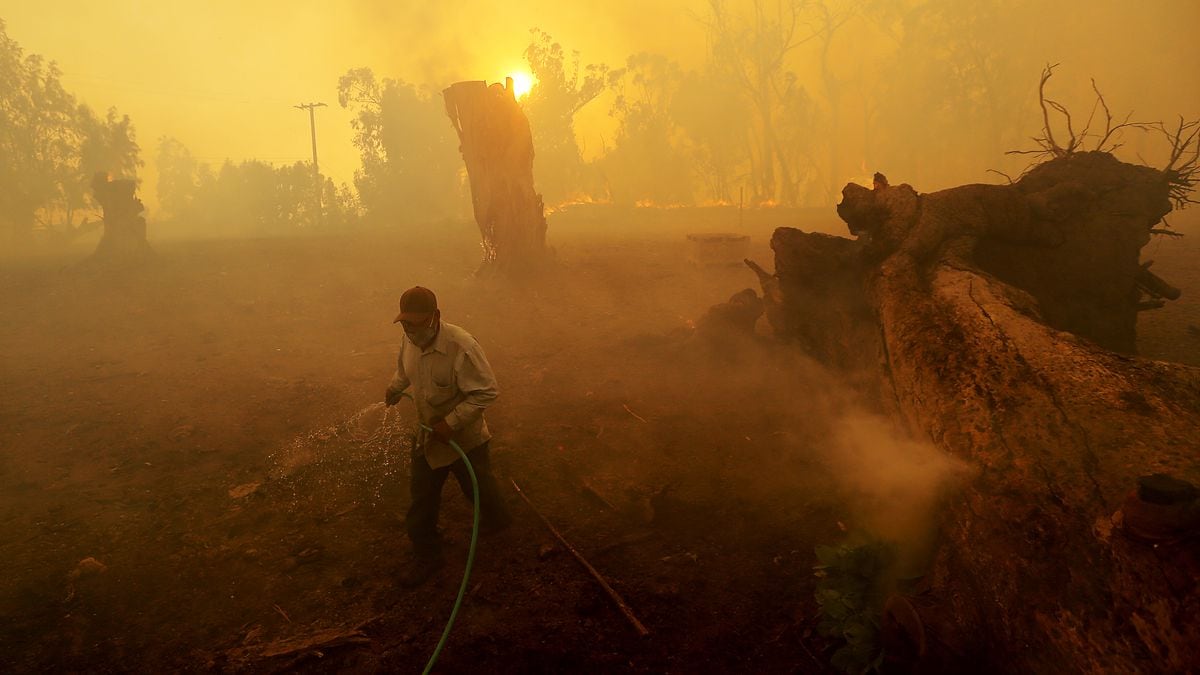That the world is getting warmer is a reality proven by climate science. The acceleration of this process over the past four decades is also common. But the entire globe does not see its temperatures increase at the same rate: on the American continent, the north has experienced a greater increase than the south; rich countries, more than middle-income countries; and the coasts, especially the Atlantic, more than the interior. Although some of these trends may change.
Compared to the 1950 to 1980 average, temperatures in North America, Central America and the Caribbean increased by almost 1.2 degrees Celsius. About four-fifths of the increase took place in a single decade: the 1990s. It was that of the definitive awareness of global warming, with the ozone hole (now in decline) and the “greenhouse effect” as protagonists. But a gradual change in consumption patterns, in particular energy consumption, facilitated by access to better technologies and the presence of new regulatory mechanisms, as well as international treaties and protocols, has slowed down (but without slowing it down) the growth of 21st century, when South America took over: from 2003 to 2015, the increase was as strong as the previous 25 years. The rate of temperature rise doubled.
Yet North America, the United States and especially Canada have accumulated the largest increases in average temperature since the 1960s, at a considerable distance from the rest of the country. It is no coincidence that these are the two nations with the highest degree of economic development on the continent: fossil fuels have been essential to consolidate growth and well-being, and this is the result.
Likewise, they continue to be today, especially for countries aspiring to join the highest income club. These nations tend to see as a certain redistributive imbalance that it is precisely now that they seek to implement transnational emission limits: when they are no longer so necessary for those who have relied on them. to achieve their growth goals. Despite the fact that the Paris pledge already included compensation mechanisms to rebalance opportunities, specifying its implementation at the Glasgow climate summit keeps the conversation open about the weight each country must shoulder to stop the Warming. On the American continent, the political derivatives of this gap are expressed with particular clarity in the case of large countries which, like Mexico or Brazil, require more financing with a transactional approach.
But the biggest division that can be observed is always geographic: the Andean countries, whatever their level of income, are the ones that have suffered the smallest increases. La Paz (Bolivia), the highest capital on the continent, rises to +0.64 degrees. At similar levels are Puno or Cusco, in the mountains of Peru. But it suffices to go up a little north, to approach a more temperate or directly warm environment, for the figures to multiply by two: this is the case of cities like Medellín (Colombia), Guayaquil (Ecuador) or practically all the capitals of Central America.
In fact, the coastal exposure, especially in the temperate fringes, and more strongly in its eastern slope (the coasts towards the Atlantic), determines stronger temperature rises. For example, the entire New England urban waterfront, from Edison to Boston, has seen increases of +2.8 degrees over the past sixty years. Less than Halifax, a little further north after the Canadian border (+3.08 degrees), Anchorage (capital of Alaska: +3.05 degrees), or Winnipeg, in the Canadian province of Manitoba, which is the city across the continent that suffered the largest increase (+3.41 degrees).
As is the location in areas with a drier climate or, directly, desert. The US-Mexico border (Phoenix, Arizona: +2.5 degrees; Reynosa, Tamaulipas: +2.35) is a good example. Brazil also, where the semi-arid zone and the northeastern savannah suffer the most notable impacts: the cities of Juàzeiro or Timon have experienced increases exceeding 30% those observed in Rio de Janeiro or São Paulo.
The Zoom In Brazil, going down to the level of specific meteorological stations, it draws the general pattern more clearly, but it also appears more or less dark than expected in certain areas, highlighting the innate variability in the measurements of such a datum. that the floor temperature flush.
Inevitably, the more we focus on a particular location, the more likely we are to find data that doesn’t seem consistent with the warming trend. But these specific deviations do not invalidate the overall trend, which is reflected in the statistical averages. They only express the inevitable peculiarities of a global phenomenon.
Methodology and sources. All data comes from the project Berkeley Land, which systematically and with internal quality controls compiles the temperature reports of weather stations around the world.
You can follow CLIMA ET ENVIRONNEMENT on Facebook and Twitter, or subscribe here to receive our weekly newsletter

“Coffeeaholic. Lifelong alcohol fanatic. Typical travel expert. Prone to fits of apathy. Internet trailblazer.”
